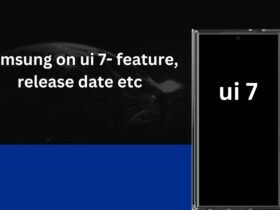
Sunita Williams and Butch Wilmore. NASA Extended Space Mission, Challenges and Path Home
As veteran NASA astronauts Sunita Williams and Butch Wilmore continue their unexpected extended stay aboard the International Space Station (ISS). the world watches closely. initially slated for 10 days. has stretched into weeks due to technical setbacks with the Boeing Starliner spacecraft. This article dives into the latest updates on their return. the significance of their mission. and how NASA and Boeing are navigating this high stakes challenge.
Who Are Sunita Williams and Butch Wilmore?
Sunita Williams age 59. is a record breaking astronaut with over 322 days in space across two long duration ISS missions. Known for her marathon runs in microgravity and holding the record for most spacewalks by a woman (seven). Williams is a symbol of perseverance.
Butch Wilmore age 61. is a seasoned Navy test pilot and two time space traveler. has logged 178 days in space. His expertise in spacecraft systems made him a critical pick for Boeing Starliner Crew Flight Test (CFT), NASA final step to certify the spacecraft for routine crewed missions.
Both astronauts embody NASA’s rigorous standards, blending technical prowess with decades of operational experience.
The Starliner Mission: Goals and Unexpected Challenges
Launched on June 5 2024, from Cape Canaveral. the Starliner CFT aimed to validate Boeing spacecraft for regular ISS crew rotations. While the spacecraft docked successfully, post launch inspections revealed multiple technical issues.
- Helium Leaks. Five small leaks were detected in the service modules propulsion system.
- Thruster Malfunctions. Four of 28 reaction control thrusters failed during docking.
- Software Glitches. Minor but critical delays in thruster firing sequences.
NASA and Boeing engineers quickly assured the public that the Starliner was stable for return, but extended troubleshooting led to repeated delays.
Why Can’t the Astronauts Return Immediately?
Contrary to speculation, Williams and Wilmore are not stranded. The ISS remains well-equipped to support them for months, and the Starliner is technically capable of an emergency return. However, NASA prioritizes resolving all anomalies before re-entry to ensure future missions avoid similar risks.
Key Reasons for the Delay.
- Data Collection: Engineers are using this opportunity to test Starliner’s systems in real-world conditions.
- Safety Overrides: Fixing software patches and understanding helium leak root causes.
- Backup Plans: SpaceX’s Crew Dragon, docked at the ISS, could return the duo if absolutely necessary—though NASA deems this unlikely.

NASA and Boeing’s Response. Transparency Under Scrutiny
NASA has held regular briefings to address public concerns, emphasizing that astronaut safety is “non negotiable.” Boeing under pressure after years of Starliner delays. has faced criticism but remains committed to resolving issues.
Latest Updates (July 2024).
- Engineers replicated ground tests to pinpoint thruster failures, linking them to excessive heat during descent.
- Helium leaks, while stable, are being monitored for long-term implications.
- A provisional return date is set for late July, pending final system checks.
Life Aboard the ISS. How Are the Astronauts Coping?
Despite the uncertainty, Williams and Wilmore remain in high spirits. They’ve seamlessly reintegrated into ISS operations, assisting with over 200 ongoing experiments, from plant growth studies to spacewalk preparations.
In a recent NASA downlink, Williams joked, “We’re enjoying the extra time—it’s like a bonus mission!” Wilmore added, “The ISS crew feels like family. We’re all problem-solvers here.”
Expert Insights. What This Means for the Future
- Dr. Jonathan McDowell (Harvard Astrophysicist). This delay is a setback, but not a failure. Every new spacecraft faces teething issues. SpaceX Dragon had its own challenges in 2020.
- Kathy Lueders (Former NASA Human Spaceflight Chief). “NASA’s cautious approach sets a precedent. It reinforces that crew safety trumps schedules.”
The Starliner certification, now expected in early 2025. will give NASA a second reliable ride to the ISS alongside SpaceX—a critical redundancy for space exploration.
FAQs: Quick Answers to Top Questions
Q= Are Sunita Williams and Butch Wilmore in danger?
A: No. The ISS has ample supplies and the Starliner remains a viable return option.
Q= Why not use SpaceX Crew Dragon instead?
A: NASA confirms the Starliner is safe for return. Using Dragon would require suits and seats adjusted for ISS crew, complicating logistics.
Q= What’s the biggest lesson from this mission?
A: Thorough testing is irreplaceable. Real-world data from this mission will shape Starliner future success.







